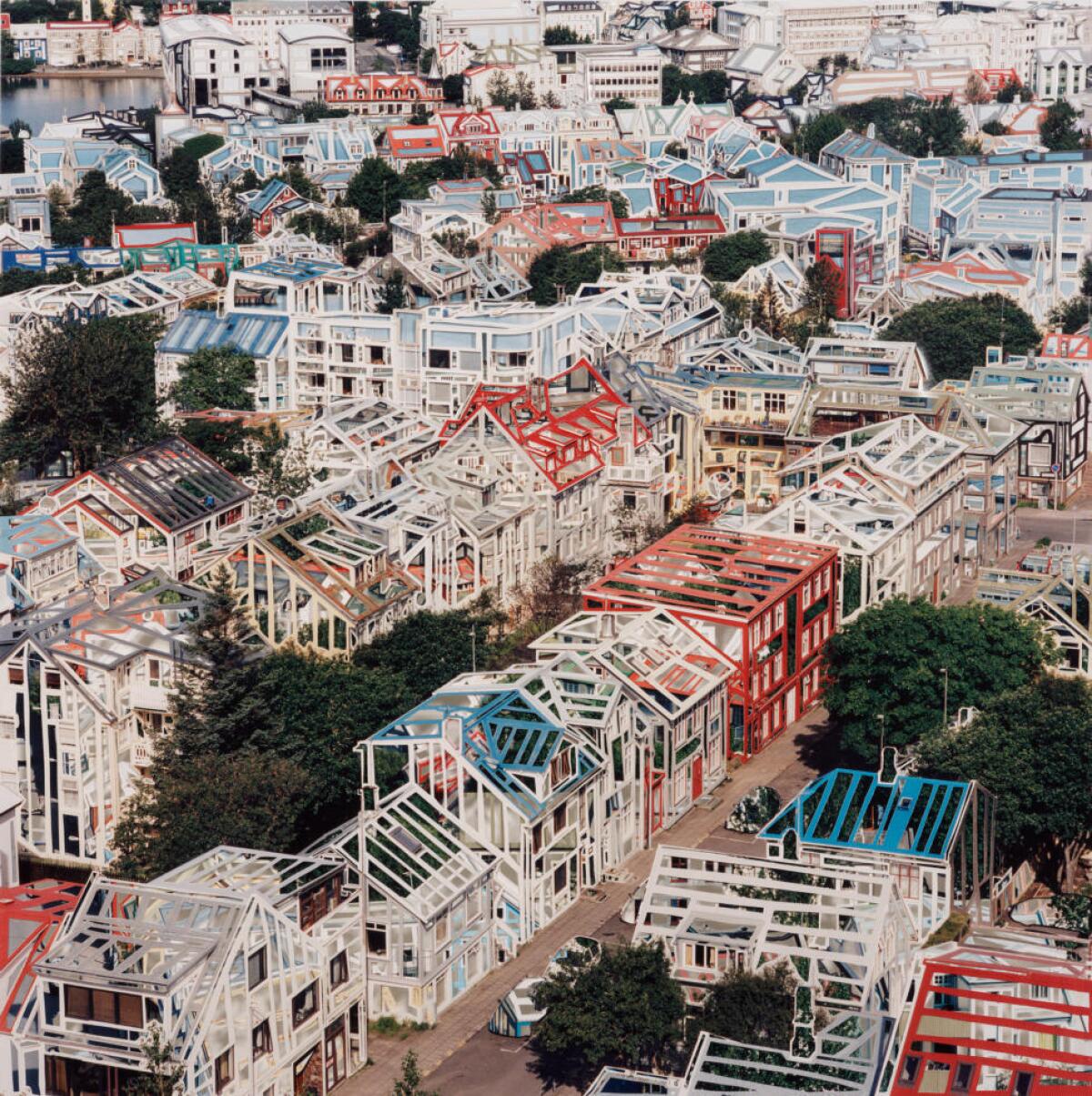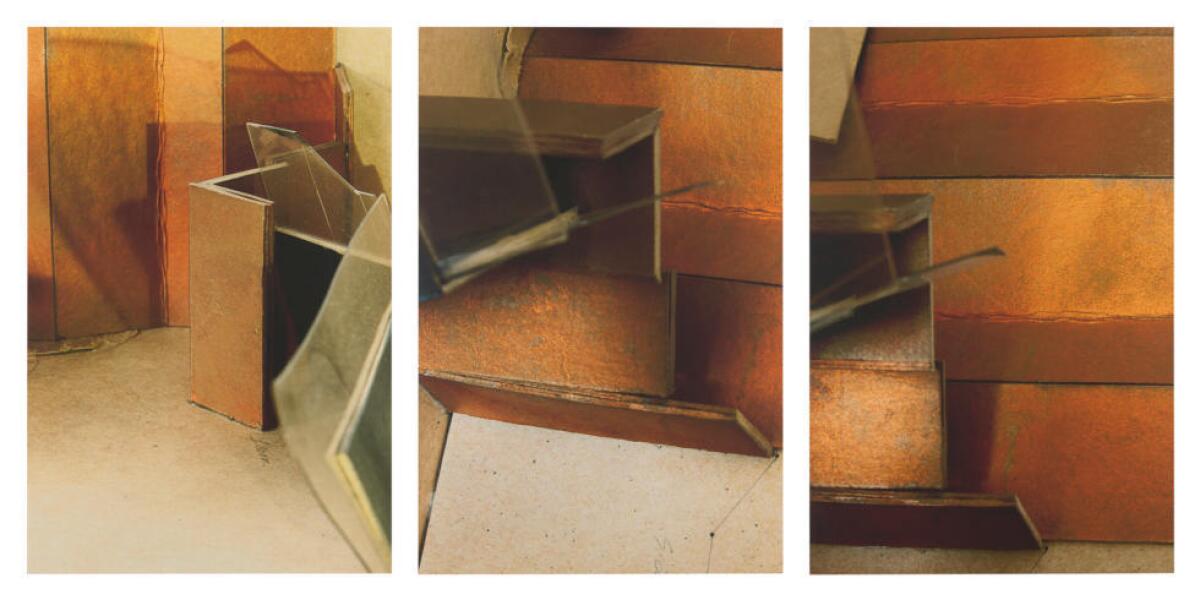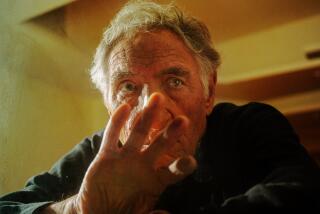Review: Cut, folded, pasted: Photography takes a twist and turn in the Getty’s ‘Paper Play’

“Cut! Paper Play in Contemporary Photography,” a delightful teaser of a show at the Getty Museum, divides neatly into two complementary halves.
Three of the six artists in the show photograph collages or constructions they’ve made out of paper. Their works present as straight pictures, even if they’ve been composed through circuitous means.
The other three artists start with more or less conventional pictures and then set to dismantle the veracity and transparency that photography implicitly carries.
Curator Virginia Heckert gives the show a bit of historical ballast by including some precursors from the museum’s collection: a luscious, shadowy print by Francis Bruguière and another by Manuel Álvarez Bravo, whose curled sheet could easily pass as a model of a Frank Gehry bandshell.
The Bravo plays nicely with a 2012 triptych by Thomas Demand. He so tightly frames details of the creased walls and angled edges of a John Lautner architectural model that scale and context drop away nearly entirely, leaving fields of pure color and texture.

Each artist in the show is represented by just a few pieces, often from different bodies of work. Variety overrides depth, but the disparate bites amount to a satisfying meal.
In each of his three large prints, Matt Lipps visualizes a new physical or intellectual space through a montage of reproductions culled from reference books. He interjects an image of the great American West smack into the middle of a family home in one provocative piece; in another, he lines the shelves of an imagined archive with visual quotations from canonized photographers.
The most engrossing piece in this first section is Daniel Gordon’s “Clementines” (2011), a tabletop still life with a charismatically funky sense of space. Gordon fills a crumpled paper basket with the fruit of his hands, scissors and internet searches. He sets these little orbs with patchwork photographic skins against a background that poses multiple-choice options for defining place. This glorious ode to the unsettled nature of two-dimensional representation is what Cezanne might have made, had he used Photoshop.
Blades come out more flagrantly in the second part of the show.
In the shimmering beauty “Mountain XXIX” (2017), Christopher Russell scrapes and nicks the surface of a blurred, overexposed photograph to draw, in the underlying white of the photo paper, a geometric hallucination more viscerally persuasive than the vague landscape it hovers within.
Soo Kim slices through and layers multiple photographs of buildings in Reykjavik in a piece from 2007, cutting out solid walls and temporally unwinding the structures back to their framed, incomplete state: the cityscape as impossible, wondrous lattice.
Ironically, the most overtly sculptural works here, Christiane Feser’s prints with cutout loops and folded flaps, feel the thinnest. They reduce photography’s innate illusionism to fun but facile one-liners.
As a show about process, and the performative potential of photography, “Cut!” does its job with a light touch and an open spirit. Depending on where you enter the Getty’s Center for Photographs, the show makes for either an enjoyable prelude or refreshing postscript to “Paper Promises,” the historically rich, more sober, subject-driven neighboring exhibition of early American photographs.
J. Paul Getty Museum, Getty Center, 1200 N. Sepulveda Blvd., L.A. Through May 27; closed Mondays. (310) 440-7300, www.getty.edu
See all of our latest arts news and reviews at latimes.com/arts.
ALSO
Teotihuacan: An ancient Mexican city’s remarkable art comes to life at LACMA
A revelatory Eleanore Mikus show at Marc Selwyn
Fay Ray’s photomontages at Shulamit Nazarian
More to Read
The biggest entertainment stories
Get our big stories about Hollywood, film, television, music, arts, culture and more right in your inbox as soon as they publish.
You may occasionally receive promotional content from the Los Angeles Times.






